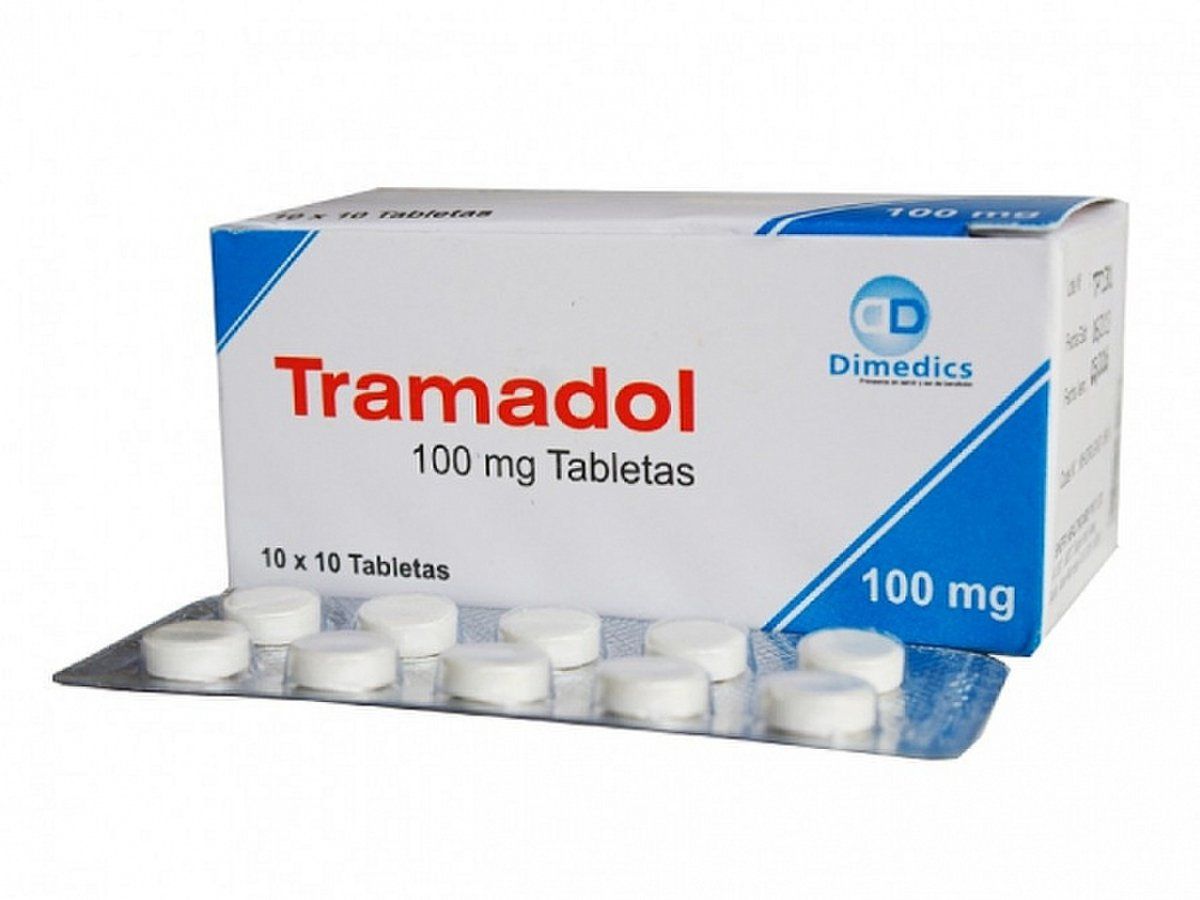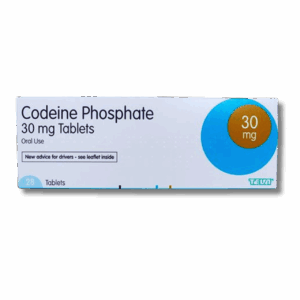Tramadol
Original price was: £3.57.£2.47Current price is: £2.47.
Description
Tramadol is a prescription medicine for moderate to moderately severe pain. It’s an opioid analgesic that acts on the nervous system, making it a common choice when over-the-counter painkillers just don’t cut it.
Doctors often prescribe tramadol after surgery or for ongoing pain that interferes with daily life. While tramadol can bring real relief, it’s important to know about possible side effects and the risk of dependence.
Some people feel nauseous or dizzy, so using it safely really matters. If you’re considering tramadol, understanding how it works helps you make smarter choices about pain management.
Key Takeaways
- Tramadol is an opioid analgesic used for moderate to severe pain.
- Safe use matters because of side effects and dependence risks.
- Always follow medical advice and stay alert for withdrawal or overdose signs.
What Is Tramadol?
Tramadol is a prescription opioid for moderate to moderately severe pain in adults. It works a bit differently than traditional opioids, offering a unique option for certain pain types.
Overview of Tramadol
As an opioid analgesic, tramadol doesn’t act exactly like morphine or other classic opioids. It also affects certain neurotransmitters in the brain.
Doctors usually prescribe it when weaker painkillers haven’t helped. Tramadol is a controlled substance in the UK and many other places because of misuse and dependence risks.
You can only get it with a doctor’s prescription. Because side effects and withdrawal are possible, medical professionals need to keep a close eye on its use.
Tramadol can help after surgery or with chronic issues like arthritis. It’s not for everyone, though, so your healthcare provider decides if it’s right for you.
Tramadol Hydrochloride and Formulations
Most tramadol tablets and capsules use tramadol hydrochloride as the active ingredient. This makes dosing stable and helps your body absorb it effectively.
You’ll see brand names like Ultram, Ultram ER, Conzip, Ralivia, and Ryzolt. These all contain tramadol hydrochloride but can have different release profiles—immediate-release for quick relief or extended-release for longer-lasting pain.
Some places offer oral drops, injections, or suppositories for special situations. Your doctor will pick the dose and form based on your pain and health.
Mechanism of Action
Tramadol acts as an opioid agonist, binding to µ-opioid receptors in your brain and spinal cord. This lowers how you feel pain.
Unlike many opioids, tramadol also blocks the reuptake of serotonin and norepinephrine. That dual action means it changes how pain signals move through your brain, so it doesn’t work quite like other painkillers.
If you take an immediate-release tablet or capsule, you’ll usually feel the effects within an hour. Because of its dual action, tramadol can cause side effects from both opioids and changes in brain chemicals.
Tramadol Uses and Dosage
Doctors prescribe tramadol for different types of pain. It’s important to understand what it treats, how to take it, and what to watch for in special cases.
Conditions Treated
Tramadol is for moderate to severe pain that weaker medicines can’t manage. It’s used for sudden pain, like after surgery, or for chronic pain, such as arthritis or back pain.
Sometimes doctors give tramadol for nerve pain conditions like diabetic neuropathy, postherpetic neuralgia, or fibromyalgia. It’s also an option when other pain relief just doesn’t work.
Less commonly, tramadol treats pain from migraine, restless legs syndrome, or even cancer pain, though that requires closer supervision. Because it’s a controlled substance, doctors only prescribe it when necessary.
Dosage Forms and Administration
Tramadol comes as standard tablets (50 mg), slow-release tablets (from 50 mg up to 400 mg), and sometimes as a liquid or injection in hospitals. Immediate-release is for sudden pain; slow-release is for ongoing pain.
Here’s a quick table of common dosage forms:
| Form | Strengths (mg) | Use |
|---|---|---|
| Standard tablet | 50 | Short-term pain |
| Slow-release tablet | 50, 75, 100, 150, 200, 300, 400 | Chronic pain |
| Liquid/injection | Varies | Hospital or special cases |
Take tramadol exactly as your doctor tells you. Swallow tablets whole with water—don’t crush or chew them. The starting dose is usually low to help avoid side effects, but your doctor will adjust it based on your pain, age, and health.
Special Considerations in Dosage
Some people need lower doses for safety, especially older adults or those with liver or kidney issues. If you’re taking other medications, your doctor might need to tweak your tramadol dose.
Pregnant women should avoid tramadol unless the doctor thinks the benefits outweigh the risks. It’s not recommended during breastfeeding, since tramadol can pass into breast milk and cause harm.
Because tramadol can be addictive, doctors usually prescribe it for the shortest time possible. They’ll watch for signs of misuse, especially if you need it long-term. If you notice side effects or the medicine isn’t working, let your doctor know.
Side Effects, Risks, and Safety
Tramadol is a controlled substance and can cause a range of side effects. There are also some serious risks, especially if you combine it with other drugs.
Common Side Effects
Most side effects are mild but can still mess with daily life. Many people report nausea, constipation, and dry mouth soon after starting tramadol.
Drowsiness and dizziness are also pretty common, especially when you first start or increase your dose. Other possible reactions include vomiting, headache, and sometimes loss of appetite.
These symptoms usually get better as your body adjusts, but sometimes your doctor may need to change your dose. If you feel sleepy or dizzy, it’s best not to drive or operate heavy machinery.
Common Side Effects Table:
| Symptom | Frequency |
|---|---|
| Nausea | Very common |
| Constipation | Very common |
| Drowsiness | Common |
| Dizziness | Common |
| Vomiting | Common |
| Headache | Sometimes |
| Dry mouth | Common |
Serious Risks and Complications
Some reactions to tramadol can be much more serious. Respiratory depression—when breathing slows down dangerously—can happen, especially in older adults, people with lung problems, or those on other meds that slow breathing.
Seizures are possible, especially at higher doses or if you have a history of epilepsy. There’s also a rare but dangerous risk of serotonin syndrome, with symptoms like agitation, confusion, high fever, and muscle stiffness—especially if you’re taking some antidepressants.
Allergic reactions can happen too, like rash, swelling, itching, or trouble breathing. Some people notice mental health changes, like anxiety, depression, or even hallucinations. Long-term use can lead to dependence.
Drug Interactions and Contraindications
Tramadol interacts with a lot of other medications. If you take it with other opioids, sleeping pills, or alcohol, the risk of serious side effects like drowsiness or slowed breathing goes up.
Certain antidepressants can make serotonin syndrome more likely. Sleeping tablets, some anti-anxiety meds, and drugs that lower the seizure threshold can also cause problems.
People with allergies to opioids, uncontrolled epilepsy, or those taking MAOIs shouldn’t use tramadol. Doctors need to review your medication list before prescribing it, and you should always mention every supplement or over-the-counter drug you take.
Dependence, Withdrawal, and Overdose
Tramadol is an opioid, so it can lead to physical dependence, especially if you use it long-term. Misuse can cause withdrawal or overdose, and both need proper management.
Addiction and Habit-Forming Potential
Tramadol can be habit-forming, especially if you or your family have a history of substance misuse or mental illness. Your body might build up a tolerance, meaning you need more to get the same effect.
The Drug Enforcement Administration (DEA) calls tramadol a controlled substance because of this risk. Signs of addiction include:
- Taking tramadol longer or in higher amounts than prescribed
- Craving the drug
- Neglecting daily responsibilities
- Continuing use even when it’s causing harm
Long-term use can make it tough to stop without help.
Withdrawal Symptoms and Effects
Stopping tramadol suddenly can trigger withdrawal. Symptoms range from mild to severe and can affect your body and your mind.
Common withdrawal symptoms include:
- Agitation or anxiety
- Panic attacks
- Sweating and shaking
- Muscle aches
- Insomnia
- Nausea
- Restlessness
You might also get flu-like symptoms—chills, runny nose, that sort of thing. Some people feel mood swings or depression. It’s usually best to get medical support for withdrawal.
Overdose Management
Taking too much tramadol can cause an overdose. Signs include slow or difficult breathing, severe drowsiness, passing out, and seizures.
Overdose is an emergency. If you suspect it, call for help right away. Naloxone can reverse life-threatening effects, especially breathing problems, but tramadol overdose is sometimes tricky and hospital care is often needed.
Table: Key Signs of Overdose
| Symptom | Emergency Action |
|---|---|
| Trouble breathing | Call 999 for ambulance |
| Unconsciousness | Place in recovery position and seek help |
| Seizure | Protect from injury and seek help |
Quick treatment is essential to prevent serious complications.
Frequently Asked Questions
Tramadol is a strong opioid painkiller. People use it for a range of conditions.
It’s important to know its side effects and the right dosing. There are different forms and precautions you should keep in mind for safe use.
What are the common side effects associated with taking Tramadol?
You might feel nauseous or dizzy when taking tramadol. Headaches and constipation pop up for some folks, too.
Some people get drowsy or just plain tired. If you notice confusion, trouble breathing, or an allergic reaction, get medical help right away.
How should one determine the correct dosage of Tramadol?
Your healthcare provider should decide the right dose for you. The starting amount depends on your age, how bad your pain is, and how you react to the medication.
For most adults, the maximum is usually 400 mg in 24 hours. You’d take that split up into smaller doses throughout the day.
For what conditions is Tramadol typically prescribed?
Doctors often pick tramadol for moderate to severe pain. It comes up after surgeries, for injuries, or for long-term pain when other painkillers just don’t cut it.
What is the recommended administration method for Tramadol injection?
Only a healthcare professional should give tramadol injections. They’ll inject it into a vein or muscle while keeping a close watch on you.
Your doctor figures out the dose and how often you need it, based on what you need.
Is there a difference between Tramadol tablets and capsules in terms of usage?
Both tablets and capsules are taken by mouth. They work pretty much the same way in your body.
The real difference is just the form—some people find one easier to swallow than the other.
What precautions should be taken when using Tramadol hydrochloride?
Don’t mix tramadol with alcohol or medicines that mess with your brain—it just ramps up the risk of side effects. If you’ve dealt with seizures, breathing issues, or substance abuse, definitely talk to your doctor first.
Stick to the dose your doctor gives you. Taking more than prescribed usually leads to trouble you don’t want.


